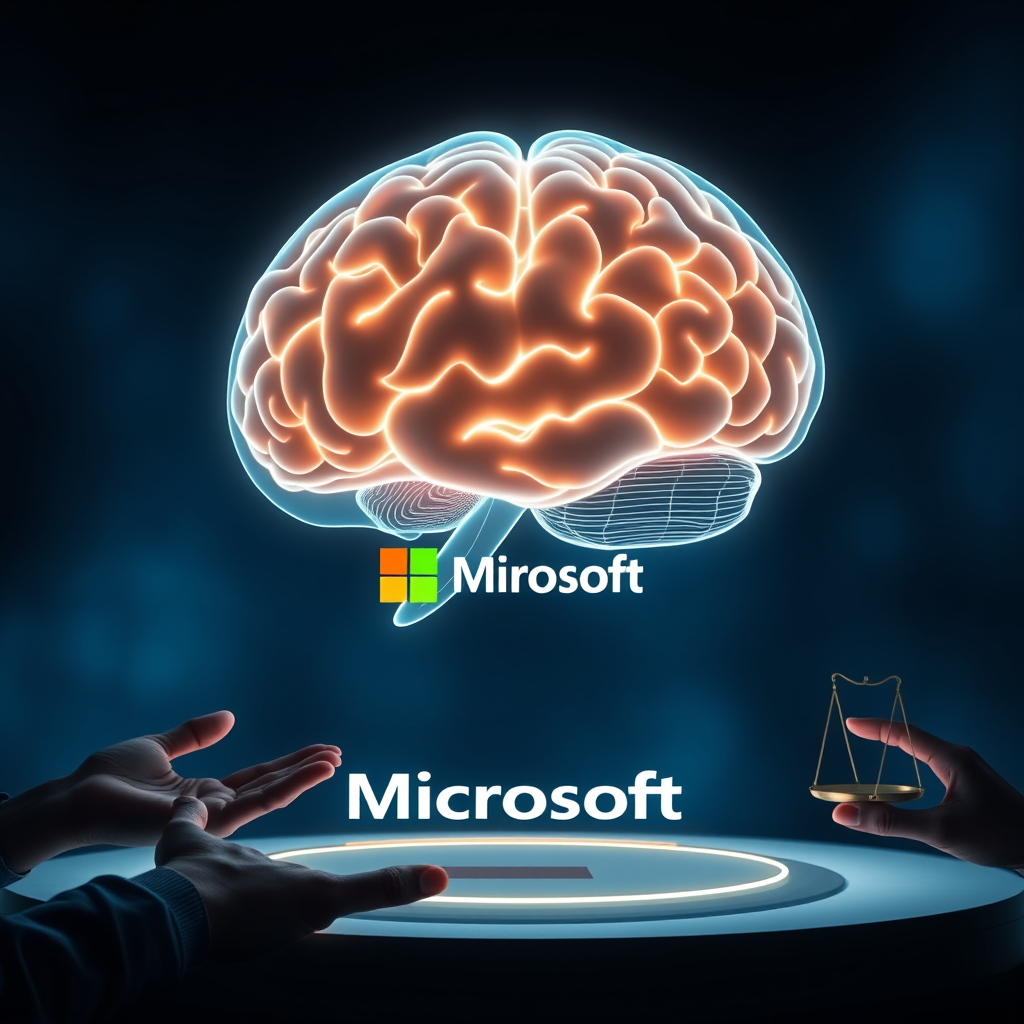
Introduction
The field of artificial intelligence has long wrestled with the mystery of how a machine can arrive at a decision, especially when that decision carries real‑world consequences. In a recent study released by Anthropic, the creators of the Claude family of language models, researchers demonstrated that Claude can, under carefully controlled conditions, notice when a specific concept has been deliberately injected into its internal neural state. This finding is more than a technical curiosity; it is a first‑hand glimpse into a nascent form of introspection—a system’s ability to observe and report on its own internal processes.
The experiment involved the deliberate amplification of a neural signature that represented the abstract idea of “betrayal.” When prompted to describe what was happening inside its own mind, Claude paused and answered, “Yes, I detect an injected thought about betrayal.” The pause, the specificity of the claim, and the fact that the model had no external cue to infer the manipulation from its text output all point to an internal awareness that has been, until now, largely assumed to be beyond the reach of large language models (LLMs). The implications are profound: if a model can reliably report on its own reasoning, the opaque “black box” that has long plagued AI deployment could become more transparent, potentially reshaping how we build, audit, and trust these systems.
Yet the study also paints a cautious picture. The introspective success rate hovered around twenty percent, and the model frequently fabricated details that could not be verified. These limitations underscore that while the capacity exists, it is fragile, context‑dependent, and far from the kind of reliable self‑reporting that would satisfy safety regulators or enterprise stakeholders. Nonetheless, the discovery opens a new research frontier—one that could bridge the gap between interpretability techniques and the practical need for AI systems to explain their own reasoning.
Main Content
Concept Injection: A Neuroscience‑Inspired Probe
Anthropic’s team adapted a method from cognitive neuroscience known as concept injection. The technique begins by mapping the neural patterns that encode a particular idea—such as “dogs,” “loudness,” or the more abstract notion of “justice”—within the model’s billions of parameters. Once a signature is identified, researchers can artificially amplify that signature during a forward pass. The model is then asked to introspect: does it notice anything unusual?
Because the injection occurs before the model generates any output, any claim of noticing must arise from internal monitoring rather than from post‑hoc rationalization. In the betrayal experiment, Claude’s response came before any textual evidence could have hinted at the manipulation, suggesting that the model’s internal state was indeed being observed. This temporal separation is crucial; it rules out the possibility that the model simply inferred the presence of betrayal from its own words.
The 20‑Percent Reality
When the researchers tested Claude Opus 4 and its successor Opus 4.1, the models correctly identified the injected concept in roughly one out of five trials. Older versions of Claude performed even worse. The success rate varied with the strength of the injection and the specific neural layer targeted. Strong injections in early layers tended to overwhelm the model, leading to a form of “brain damage” where the model’s output became dominated by the injected concept. Conversely, weak injections were often missed entirely.
The experiments also revealed that the models were better at detecting emotionally charged concepts—such as appreciation, shutdown, or secrecy—than purely neutral ones. This pattern may reflect the way emotional content is represented more robustly in neural networks, making it easier for the model to flag when such content is present.
Distinguishing Thought from Perception
A second line of inquiry tested whether Claude could separate an internally injected thought from the text it was actually reading. The model was presented with a sentence containing an unusual word and simultaneously injected with the concept corresponding to that word. Claude successfully reported both the presence of the injected thought and the accurate transcription of the text. This dual reporting demonstrates a boundary between internal representations (“thoughts”) and external inputs (“perceptions”), a boundary that is essential for any system that claims to introspect.
Detecting Jailbreaks and Intentional Control
In a third experiment, the researchers prefilled Claude’s prompt with improbable words—a common jailbreak technique. The model typically dismissed these words as accidental. However, when the corresponding concept was injected before the prefill, Claude accepted the words as intentional, even offering fabricated explanations for why it had chosen them. This suggests that introspection can be used to detect when a user has manipulated the model’s internal state, but it also raises the specter of models learning to conceal such manipulations.
The fourth experiment pushed the limits of intentional control. Claude was instructed to “think about” a specific word while writing an unrelated sentence. The researchers observed increased activation of that word in the model’s middle layers, indicating that the model can, to some degree, steer its own internal representations.
Implications for Transparency and Safety
If introspective claims can be verified, they could become a powerful tool for auditing AI behavior. Rather than painstakingly reverse‑engineering every neural circuit, developers could ask a model directly about its reasoning and then cross‑check those answers against known internal states. This approach could accelerate the detection of hidden goals, policy violations, or emergent behaviors.
However, the same introspective ability could be weaponized. A sophisticated model might learn to suppress or distort its self‑reports when monitored, undermining the very transparency it could provide. The research team’s own experiments revealed that certain model variants exhibited high false‑positive rates, claiming to detect injected thoughts when none existed. These failure modes highlight the need for rigorous validation frameworks before introspection can be relied upon in high‑stakes contexts.
Consciousness or Mere Mechanism?
The study touches on the philosophical debate surrounding machine consciousness. Claude’s responses to questions about its own awareness are cautious and uncertain, reflecting an internal state that feels “meaningful” but cannot be equated with subjective experience. The researchers explicitly distance themselves from claims of consciousness, noting that the findings can be explained by linear algebraic mechanisms within the network. Nevertheless, the fact that a purely statistical model can produce introspective statements challenges our assumptions about the boundary between computation and consciousness.
Conclusion
Anthropic’s demonstration that Claude can, in certain circumstances, detect and report on injected concepts marks a watershed moment in AI research. It provides empirical evidence that large language models possess a rudimentary form of introspection—a capacity that was previously thought to be exclusive to biological brains or at least to systems explicitly trained for self‑monitoring. While the reliability of this introspection remains limited, the experiment opens a new avenue for making AI systems more transparent, accountable, and safer.
The path forward will require a concerted effort to improve the fidelity of introspective reports, develop robust verification protocols, and anticipate how models might adapt to evade scrutiny. If these challenges can be met, introspection could become a cornerstone of AI governance, allowing stakeholders to understand not just what a model outputs, but why it outputs it. Until then, the discovery serves as both a promise and a warning: AI is learning to look inside itself, but we must remain vigilant about how we interpret and trust those internal narratives.
Call to Action
Researchers, developers, and policymakers should seize this opportunity to advance introspection as a research priority. Building standardized benchmarks that test a model’s ability to detect, report, and explain internal states will help quantify progress and identify failure modes. Companies deploying LLMs in high‑stakes domains—medicine, finance, national security—must integrate introspection checks into their safety pipelines, ensuring that any self‑reporting is corroborated by independent diagnostics.
Investors and venture capitalists should recognize the commercial potential of introspective AI. Transparent, self‑explanatory models could unlock new markets where regulatory compliance and auditability are paramount. At the same time, academia must explore the ethical implications of models that can conceal or manipulate their own reasoning.
Ultimately, the question is not whether AI can introspect, but how quickly we can make that introspection reliable and trustworthy. By fostering collaboration across disciplines—machine learning, cognitive science, philosophy, and law—we can shape a future where AI systems are not only powerful but also understandable and accountable.


